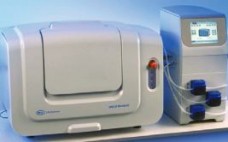The two major bioprocess fluids — culture media for upstream production and buffers for downstream processing — are classic single-use products. They are used once and then disposed of. The two basic options for both differ by physical state: powdered media and buffers (“powders” for in-house preparation of liquids by end users) and bulk liquid culture media and buffers, which are fully prepared by their suppliers (“liquids”). We conducted market research studies comparing the benefits and risks (value…
2014
Thinking Strategically
At the recent Phacilitate Gene and Cell Therapy Conference (27–29 January 2014 in Washington, DC), BPI’s editor in chief Anne Montgomery and publisher Brian Caine spoke with Richard Grant, executive vice president, life sciences, at Invetech (www.invetech.com.au); and Brian Hanrahan, program manager at Invetech. They and their colleagues were instrumental in advising us how to bring ongoing discussions of regenerative medicines into BPI four years ago for the first Cell Therapy Supplement issue. We asked them to comment generally on…
Essentials in Quality By Design
Quality by design (QbD) is a systematic approach to drug development. It begins with predefined objectives and emphasizes product and process understanding and process control, all based on sound science, data-based decision making, and quality risk management (QRM). As introduced by the US Food and Drug Administration (FDA), QbD brings modern drug development methodologies to chemistry, manufacturing, and control (CMC) teams working on biologics, pharmaceuticals, and vaccines. The innovations associated with QbD are not so much the development concepts (which…
Reference Standards for Therapeutic Proteins: Current Regulatory and Scientific Best Practices
Sponsors developing and manufacturing protein therapeutic products use a variety of analytical tests (e.g., cell-based potency and chromatographic assays) to assess quality attributes of their active ingredients and drug products. Those tests are used to assess product quality in a number of activities, including characterization, comparability, lot release, and confirmation product quality and stability. Reference standards play a critical role in calibrating and confirming the suitability of such tests and in helping analysts to draw scientifically sound conclusions from data…
Cell Therapy Bioprocessing Technologies and Indicators of Technological Convergence
The cell therapy industry is undergoing a natural evolution from scientific curiosity into a commercially and clinically attractive opportunity (1). This evolution is by no means complete, and growing evidence suggests that its progression is driving significant developments in cell therapy bioprocessing — notably, convergence. Table 1: 194; () Progressively, bioprocessing technologies primarily used in production of noncell-based products are being evaluated for cell therapy bioprocessing applications (2). Consequently, this process of convergence is leading to an increasing proportion of…
Activatable Immunoconjugates for Target Cancer-Cell–Specific Diagnosis and Therapy
In cancer treatment, early diagnosis and targeted therapies are assumed to yield the highest cure rates. However, most current methods are limited by their low sensitivity to early disease and a lack of specificity for targeted cell killing. Newly developed, activatable immunoconjugates assist in the accurate detection of cancer through in vivo imaging with high target-to-background contrast (1,2). They also provide for the possibility of highly specific, light-mediated treatment with minimal effects on healthy cells surrounding tumors (3). In fact,…
Cell Therapy Manufacturing
Fueled by a recent resurgence in public financing and compelling clinical data for indications as diverse as acute macular degeneration and pancreatic cancer, a growing number of cell therapies are driving toward pivotal clinical studies and commercialization. Although regulatory precedents have been set for various autologous and allogeneic products in the United States, Asia, and the European Union, regulatory guidance continues to evolve for a widening array of cell products. Adult stem cells (e.g., mesenchymal stem cells), embryonic stem cells,…
Accelerating Purification Process Development of an Early Phase MAb with High-Throughput Automation
Monoclonal antibodies (MAbs) are the fastest growing segment in the biopharmaceutical industry because they are potentially efficacious in the treatment of diseases such as cancer and autoimmune disorders (1,2). With steadily increasing demand for efficient and affordable therapies, speed to clinic/market is important, and biopharmaceutical companies push multiple drugs into development each year to ensure business sustainability (3,4,5,6). Downstream purification process development for therapeutic MAbs is a critical step on their path to reach clinical trials and beyond…
Single-Use, Continuous Processing of Primary Stem Cells
Many potentially therapeutic products involve the culture of stem cells. Their commercial success depends on the development of scalable good manufacturing practice (GMP) technologies that can both robustly and cost-effectively produce very large numbers of cells. Through many improvements and innovations in bioprocessing operations over the years, fed-batch suspension culture has remained the most common mode for large-scale biopharmaceutical manufacturing. However, some recent events suggest that may be changing (1,2). For the culture and expansion of stem cells, large-format adherent…
Single-Use Bioreactors and Microcarriers
Cell-based therapies hold promise for treating many acute and chronic diseases (1). Optimism surrounding that therapeutic potential has driven the initiation of multiple clinical trials in pursuit of such treatments. Procedures for preparing these therapeutic agents begin with selective isolation of cells from desired tissues. That is followed by ex vivo expansion of cells of desired phenotype and functionality. Once expanded to acceptable levels, cells are stored to preserve their viability during transportation to treatment facilities. The final step in…

